Here is my Woodturning!
by William Kaufman
Note: click any picture to see a larger version.
My woodturning/woodworking career began as a young boy with a Sears Jig Saw and my Dad. I would work with my father on projects around the house. When I was in my early teens, I would spend a couple of weeks in the summer with my Grandfather in Indiana. He was a cabinet maker and I mostly observed his techniques. I was an Art Major in college. The junior high school where I did my student teaching hired me as a wood shop instructor. I spent 24 years learning and using skills on the lathe and other areas of instruction until I went on to be a vocational counselor at the high school level. I was pretty dormant on my woodworking for those 10 years with the exception of a residential building where I was a licensed builder.
A month after I retired I contracted a severe spinal infection. I spent 6 weeks in the hospital and a year and a half of rehab. The injury left me disabled for the rest of my life. This has forced me to work within my limitations of standing balance and endurance. It has also forced me to be able to learn new safe ways to use my table saw and other large equipment.
After being a bachelor for 18 years I married my wife, Martha. She helped me get back into my woodworking passion. I say this because she not only encouraged me, but helped me with projects. These included a kitchen remake, first floor bath addition, and a large cupola 5'-10" high on the garage roof where she and my son-in-law, Randy, carried it up in 3 parts. She then used my power nailer to anchor it home. This action probably led to the end of my bachelor life. She also talked me into building a shop in the 3rd bay of our garage. It had to be insulated and heated for our long Michigan winters. We completed the project and I began to do copious amounts of lathe work because of the ability to sit as I worked.
Bench work was another area where I tried to hone my skills. The use of hand tools and power carvers have opened many new areas that are exciting.
My shop is only 8' x 18' with an old Rockwell/Delta school lathe that I purchased when the school was scrapping it. I replaced the 3 phase motor with a new 110 /220 one and had my metal-working skilled neighbor, Don, repair the tailstock. It has been a wonderful machine all of these years. I'm only limited by the bed swing. I still dream of a Powermatic 3520, oh well. My other shop tools are as follows, a Dewalt compound crosscut saw, Jet air filtration system, JetDrill Press, two custom German style woodworking benches that I made, a Mastercarver flexible shaft tool, and a Dremel flexible shaft with assorted bits. I also use the
Festool Rotex RO 150 Random Orbit Sander
. I find this sander invaluable and I have never seen quality like this machine. A
Festool 55 Track Saw
makes it so easy to handle sheet goods in my condition. It also makes a jointer not needed with the silk smooth cut. The use of a Fein dust collector on the sanders is a must in such a small space. I can't use my main dust collector, a gift from my dear friend, Rick. In the winter it not only takes out the dust but the valuable heat also. Outside, in the main garage, is my 10" Jet Table saw, 16" Grizzly Bandsaw, Dust collector, jointer, and my Williams and Hussey molder planer that was my dear friend's who passed a couple of months ago. It was a gift to me from his children. I also have several other power tools, grinders, routers and sanders.
I am constantly on the lookout for trees being cut down. I scavenge the wood, paint the ends, and place them in the drying racks for future turning. I love making items for my two daughters and two step daughters and of course Martha. When my daughters Carey and Colleen were young I always had them with me while doing some work. It has paid off with the skills that they have now. I also have had my grandchildren over to learn in the shop, a hope that some day they might carry on the work. I guess it's the teacher in me that still remains after 16 years of retirement.
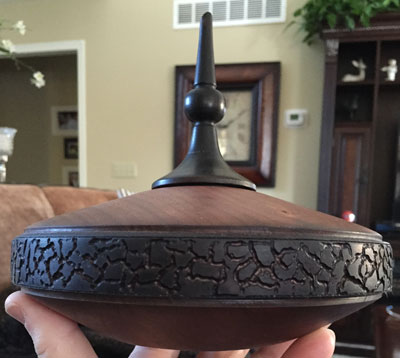
|
|
Walnut vessel carved with Ebony top
|
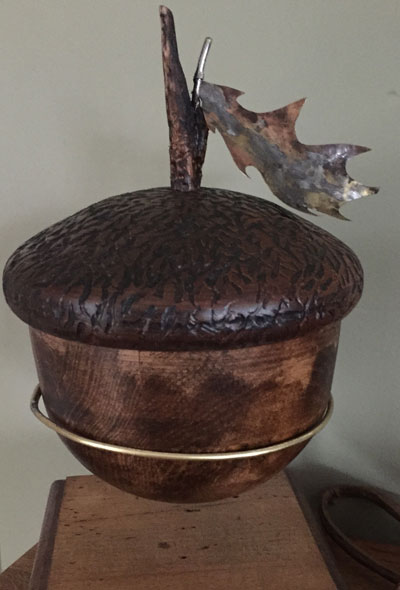
|
|
Turned acorn with brass leaf and carved top
|
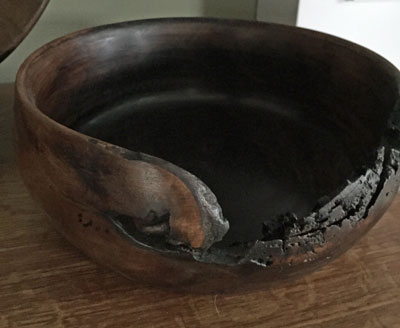
|
|
Live edge bowl
|
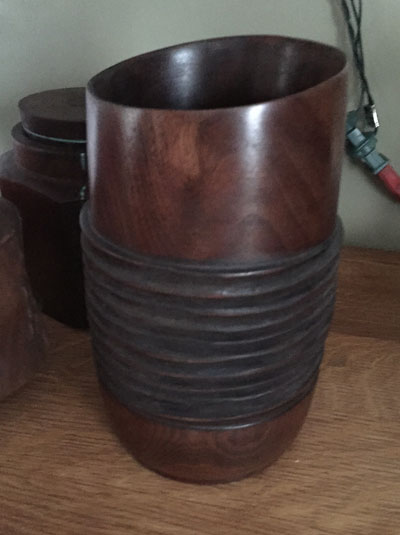
|
|
Turned and carved vase
|
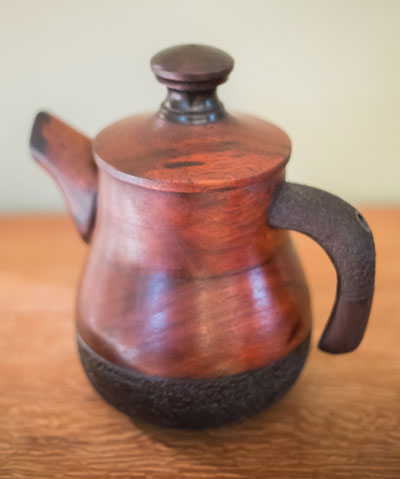
|
|
Rosewood tea pot carved turned with ebony accents
for Martha
|
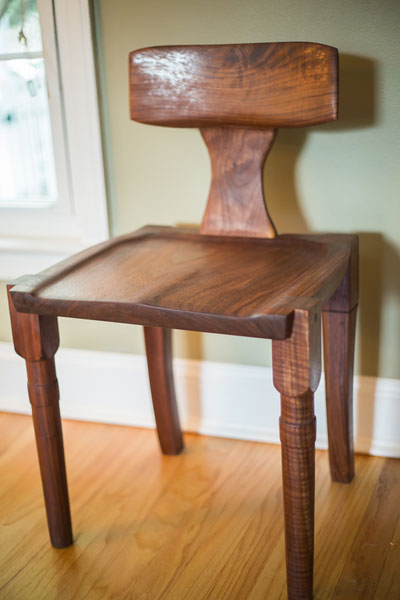
|
|
A solid walnut chair I made for my wife Martha.
Much shaping, joinery, and turning.
|
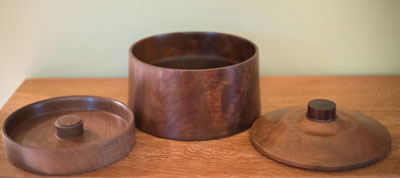
|
|
A walnut sewing container with an inner shelf. The
handle is made from ebony. Finish is oil and Briwax.
|
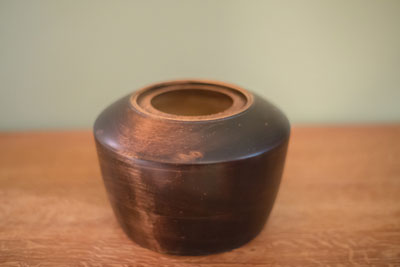
|
|
A walnut bowl with an incorporated inner bowl that has been
carved on the top surface. Finish is polyurethane and Briwax.
|
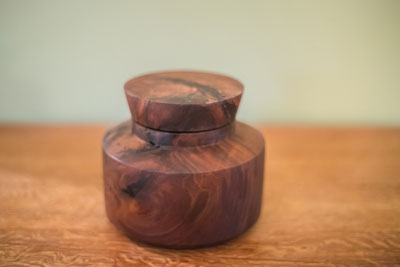
|
|
A claro walnut container with a lid from the same stock,
Briwax finish.
|
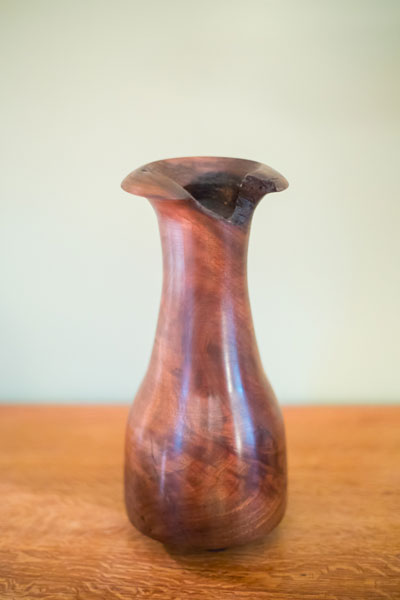
|
|
Walnut vase that incorporates natural edge. Finish is
polyurethane and Briwax.
|
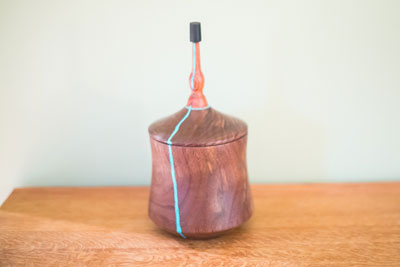
|
|
Walnut vessel with a turquoise inlay, an ebony top. I used
a Dremel carving tool to remove the line to continue to the
top. The body of the vessel had a natural split that was
filled. Finish is oil and Briwax.
|
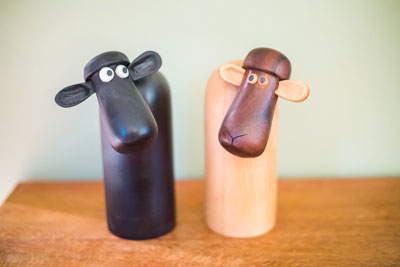
|
|
Two whimsical sheep turned on the lathe, ears were carved
and tenoned on to the sheep's head. Eyes were created
from wooden beads with ebony accents. I used black wood
dye on the black sheep with a danish oil finish on both.
|
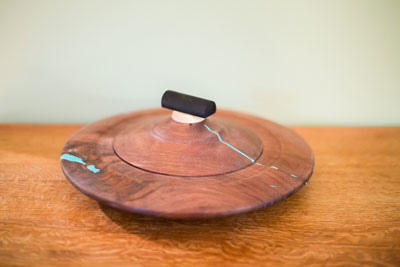
|
|
Walnut bowl that was low and filled with turquoise in
natural voids. The lid has a maple and ebony handle.
Finish is polyurethane.
|
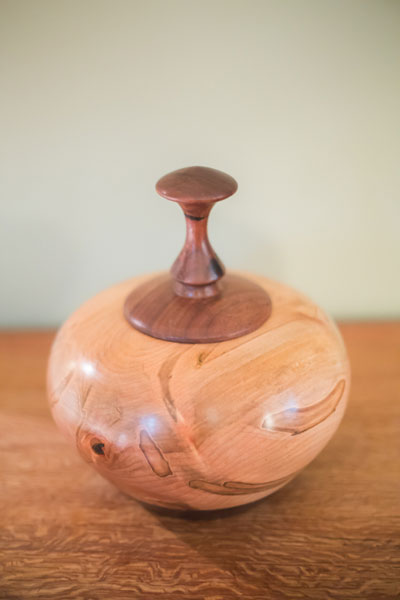
|
|
Ambrosia maple vessel with a rosewood lid.
The finish is polyurethane and Briwax.
|
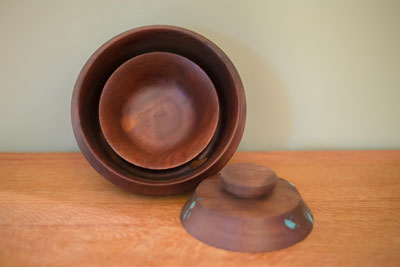
|
|
This is a double walnut bowl with a walnut lid from the
same stock. Also used powdered turquoise with CA glue
as a filler for natural voids.
|
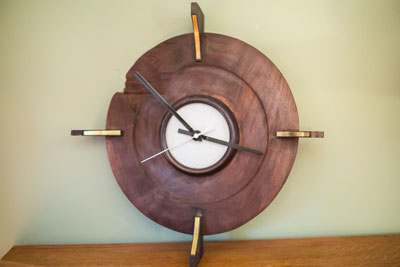
|
|
A turned clock from a piece of walnut that I knew some day
I would use because of the great defect and grain. I seldom
throw away anything (a curse). Hours are walnut cut on
bandsaw with brass accents. Inner ring is a walnut cutoff
that I saved, which is dyed. Finish is danish oil.
|
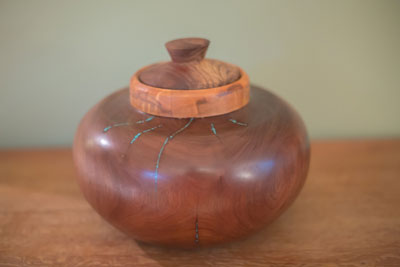
|
|
Walnut hollowed vessel with curly maple ring and claro
walnut lid. Project is approximately 11" diameter and 9"
high. The curly maple came from Sunken Treasures in
Wisconsin. We were going through there on a trip and
stopped by. They salvage old growth timber from the
bottom of Lake Superior. I had to buy a few pieces which
this is one of. I also used CA glue and ground turquoise in
some natural voids.
|
Submit your own woodturnings or woodturning shop to this column! Simply
SEND US PHOTOS
of your woodturning
projects or shop along with captions and a brief history and description of your woodturning. (Email photos
at 800x600 resolution.) Receive a $50 store credit if we show your turning in a future issue!
